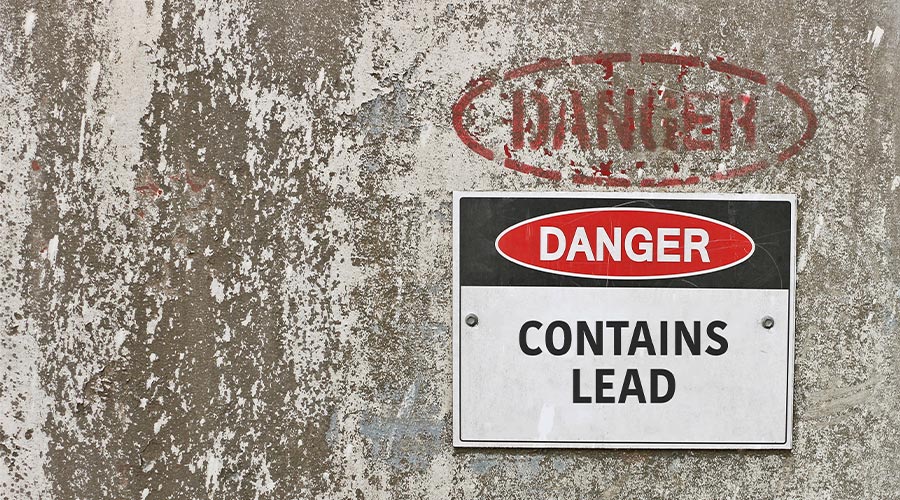
The U.S. Environmental Protection Agency (EPA) finalized stronger requirements for identifying and cleaning up lead paint dust in pre-1978 homes and childcare facilities. Children are especially vulnerable to the impacts of lead exposure, which can cause irreversible and life-long health effects, including behavioral problems, lower IQ, slowed growth and more. In adults, exposure can cause increased risk of cardiovascular disease and may cause cancer. EPA estimates that this rule will reduce the lead exposures of up to nearly 1.2 million people every year, of which 178,000 to 326,000 are children under the age of six.
This action advances EPA’s strategy to address the significant disparities in lead exposure along racial, ethnic and socioeconomic lines.
“Too often our children, the most vulnerable residents of already overburdened communities, are the most profoundly impacted by the toxic legacy of lead-based paint,” says EPA Administrator Michael S. Regan. “EPA is getting the lead out of communities nationwide. These protections will reduce lead exposures for hundreds of thousands of people every year, helping kids grow up healthy and meet their full potential.”
“We can all breathe a little easier now that the EPA has significantly lowered its dust lead standard to protect children,” says Peggy Shepard, co-Founder and executive director of WE ACT for Environmental Justice. “For decades, the academic and advocacy communities have understood that there is no safe level of lead in a child’s blood. I am a New Yorker whose state leads the nation in cases of children with elevated blood levels. I am an environmental justice leader based in Harlem where studies show that Black children living below the poverty line are twice as likely to suffer from lead poisoning as poor white children. I applaud EPA’s action to address this deadly challenge for our children and families.”
There is no safe level of lead exposure, particularly for children. In children, lead can severely harm mental and physical development, slow down learning, and irreversibly damage the brain. In adults, lead can cause increased blood pressure, heart disease, decreased kidney function, and may cause cancer. If someone is impacted by lead exposure, there is no known antidote, according to the Centers for Disease Control and Prevention.
Today’s final rule reduces the level of lead in dust that EPA considers hazardous to any reportable level measured by an EPA-recognized laboratory. The rule also lowers the amount of lead that can remain in dust on floors, window sills and window troughs after a lead paint abatement occurs to the levels listed below, the lowest levels that can be reliably and quickly measured in laboratories. This will result in significant reductions in exposures when compared to prior standards. The rule is strengthening these standards from:
- 10 micrograms per square foot (µg/ft2) to 5 µg/ft2 for floors,
- 100 µg/ft2 to 40 µg/ft2 for window sills, and
- 400 µg/ft2 to 100 µg/ft2 for window troughs.
These levels reflect standards implemented by New York City in 2021. The new standards will better protect children and communities from the harmful effects resulting from exposure to dust generated from lead paint.
Property owners, lead-based paint professionals and government agencies may identify dust-lead hazards in residential and childcare facilities built before 1978 after learning that a child living there has a high blood lead level, or because of requirements for housing receiving federal funding, among other reasons. If lead abatement is needed, EPA’s Lead-Based Paint Activities Program requires individuals and firms performing the abatement to be certified and follow specific work practices. Following an abatement, testing is then required to ensure dust-lead levels are below the new post-abatement dust lead action levels before the abatement can be considered complete.
Although the federal government banned lead-based paint for residential use in 1978, it is estimated that 31 million pre-1978 houses still contain lead-based paint, and 3.8 million of them have one or more children under the age of six living there. Lead-contaminated dust is one of the most common causes of elevated blood lead levels in children, and even low levels of exposure can be harmful. Lead dust commonly results when lead-based paint deteriorates or is disturbed. Due to normal behaviors such as crawling and hand-to-mouth activities, young children are particularly at risk of higher exposure to ingesting this lead-containing dust.
Communities of color and lower income communities are often at greater risk of lead exposure because deteriorated lead-based paint is more likely to be found in lower-income areas. Communities of color can also face greater risk of lead-based paint exposure due to the legacy of redlining, historic racial segregation in housing, and reduced access to environmentally safe and affordable housing.

 The Down and Dirty on Cleaning in Virus Season
The Down and Dirty on Cleaning in Virus Season How Surfactant Use is Expanding in Commercial Cleaning
How Surfactant Use is Expanding in Commercial Cleaning Operational Excellence Series 2025: Better Budgeting
Operational Excellence Series 2025: Better Budgeting